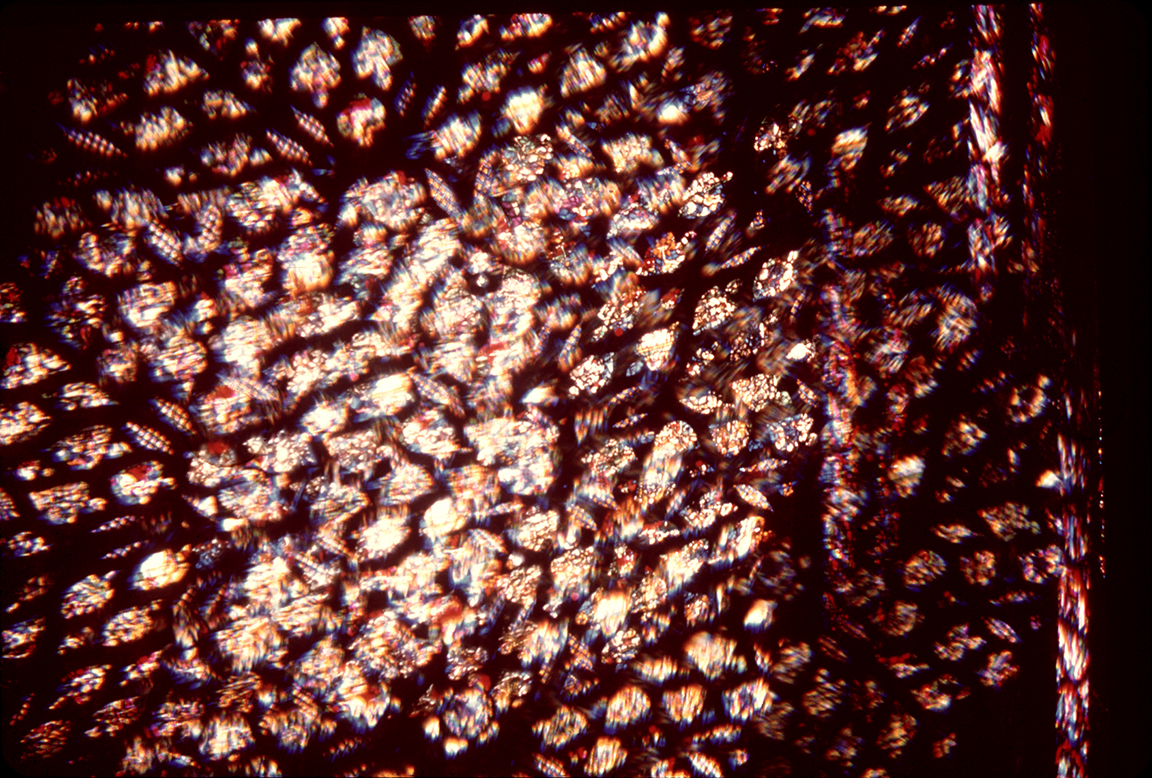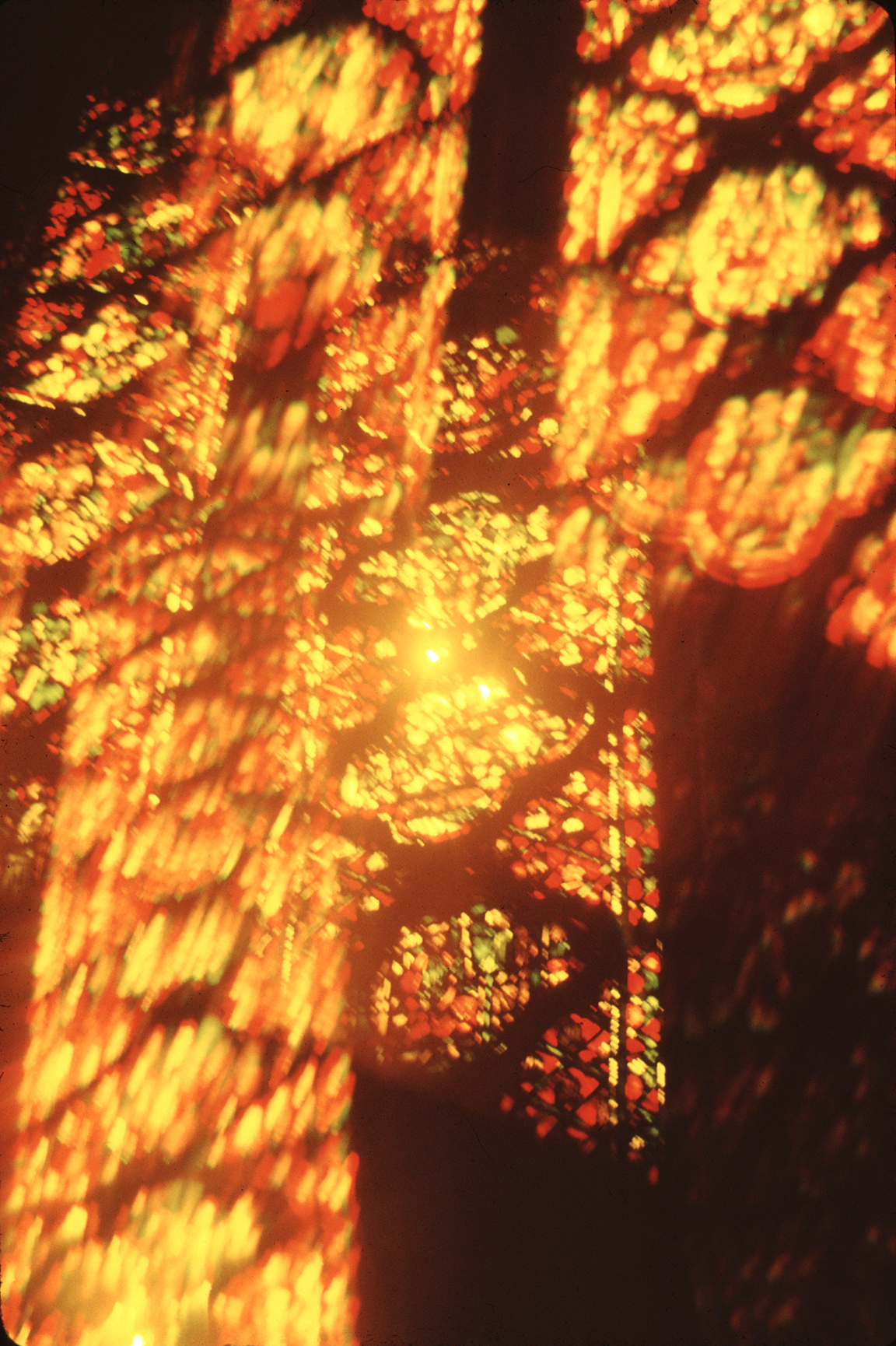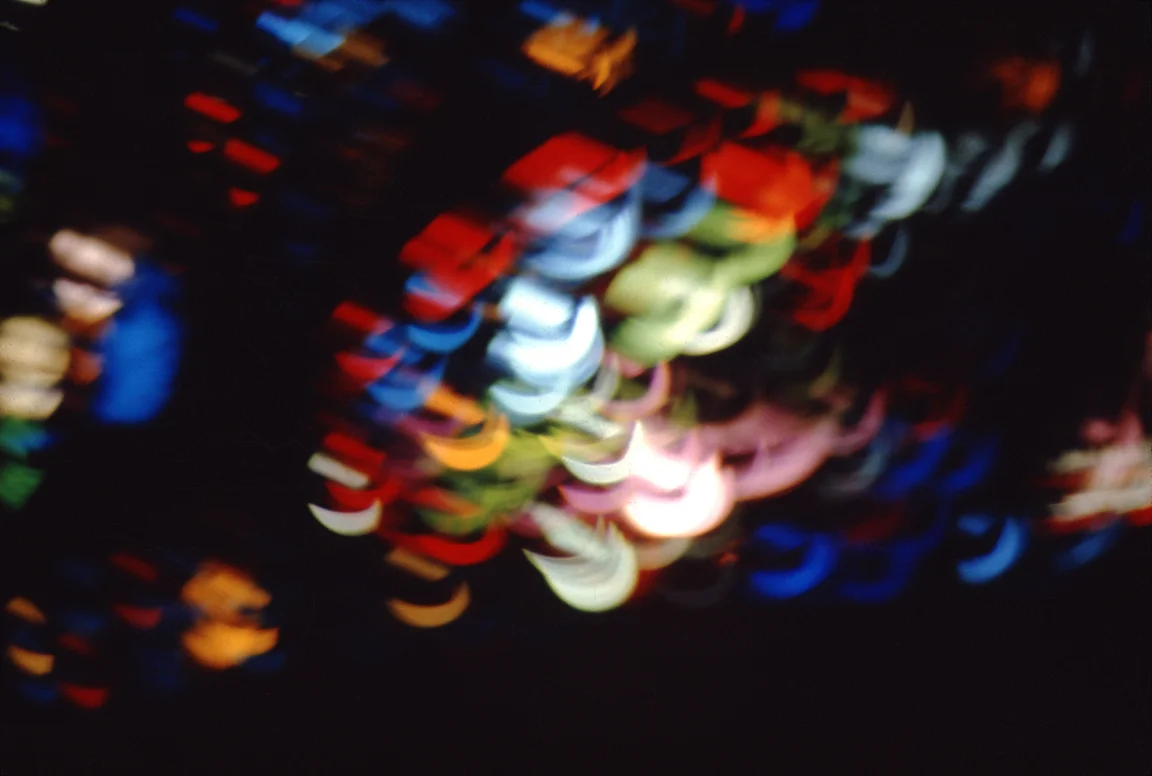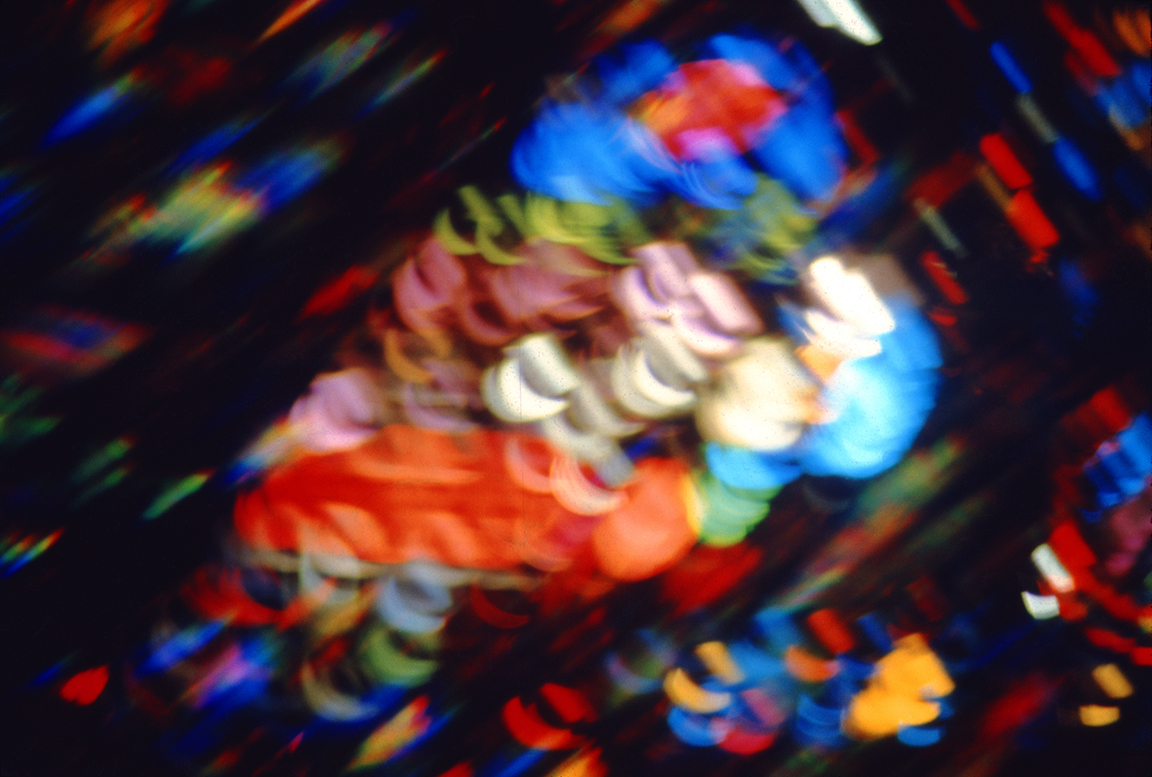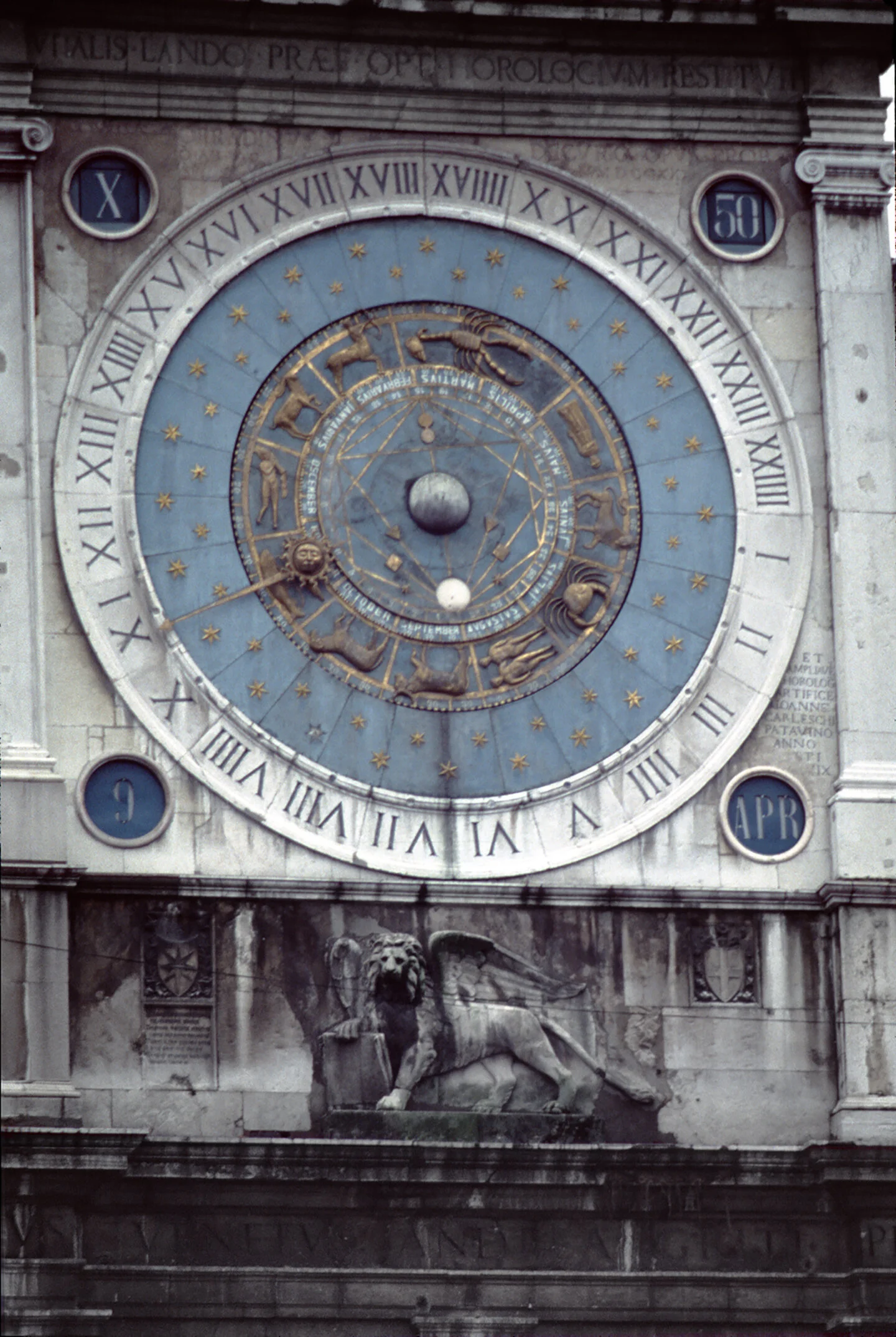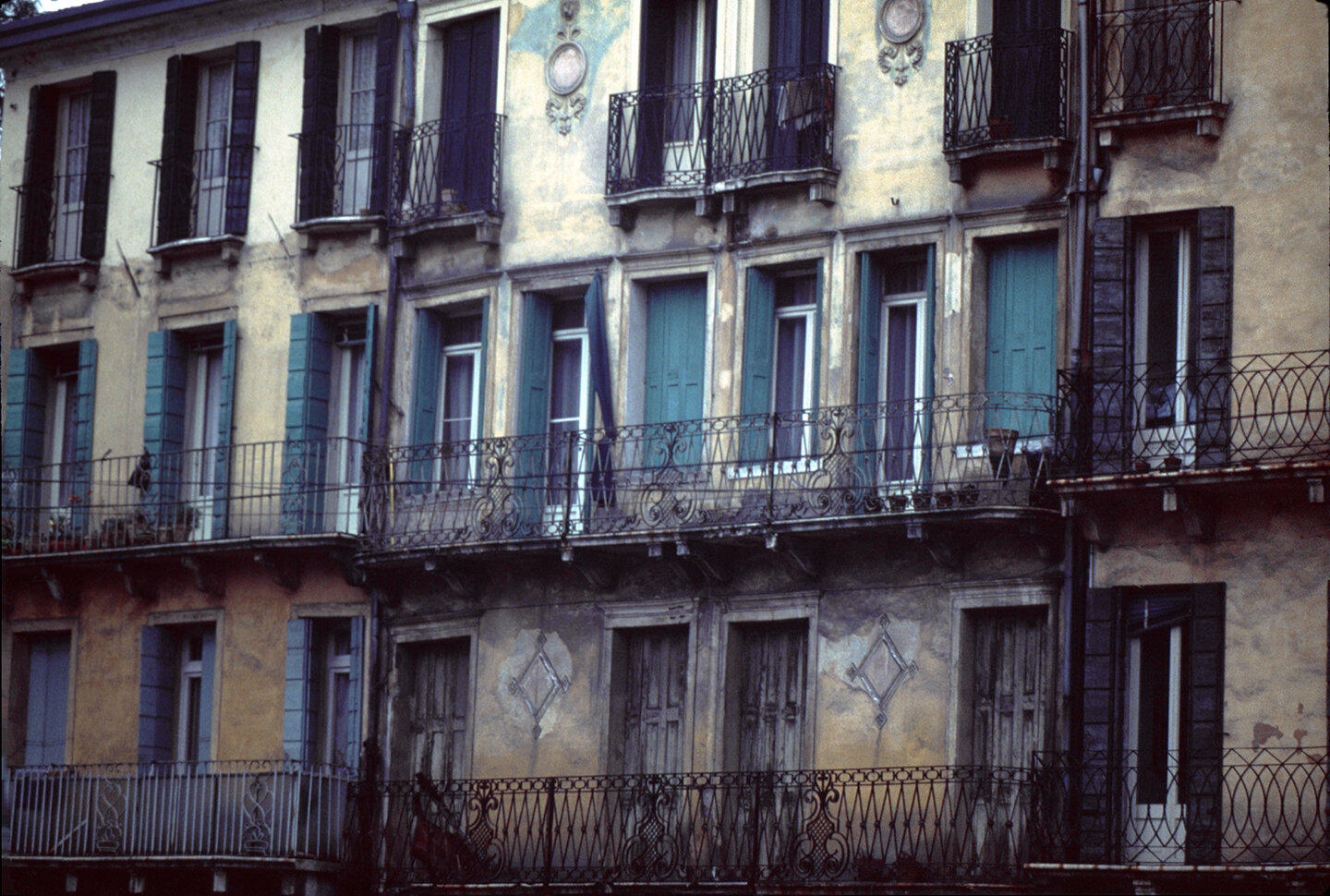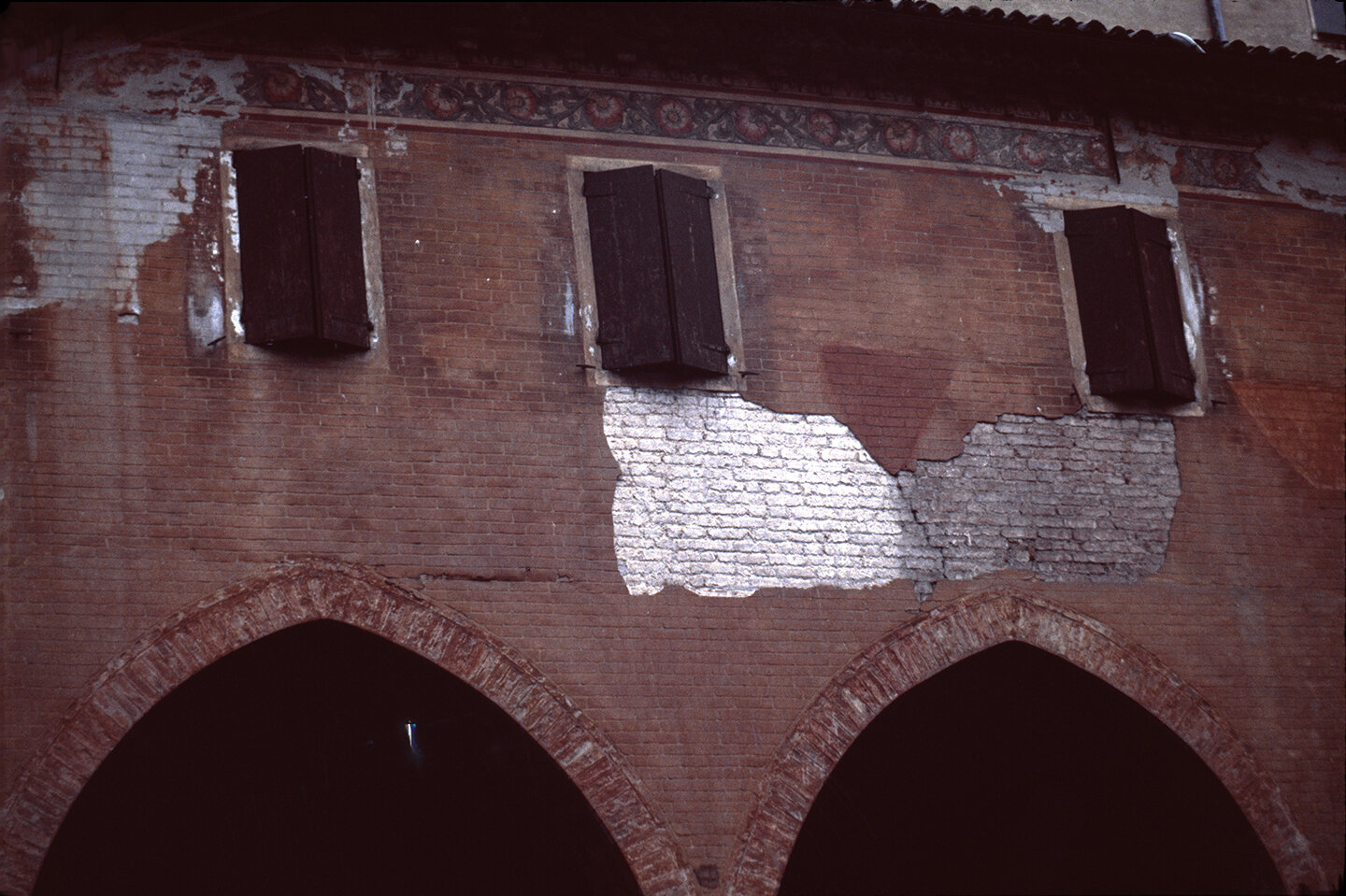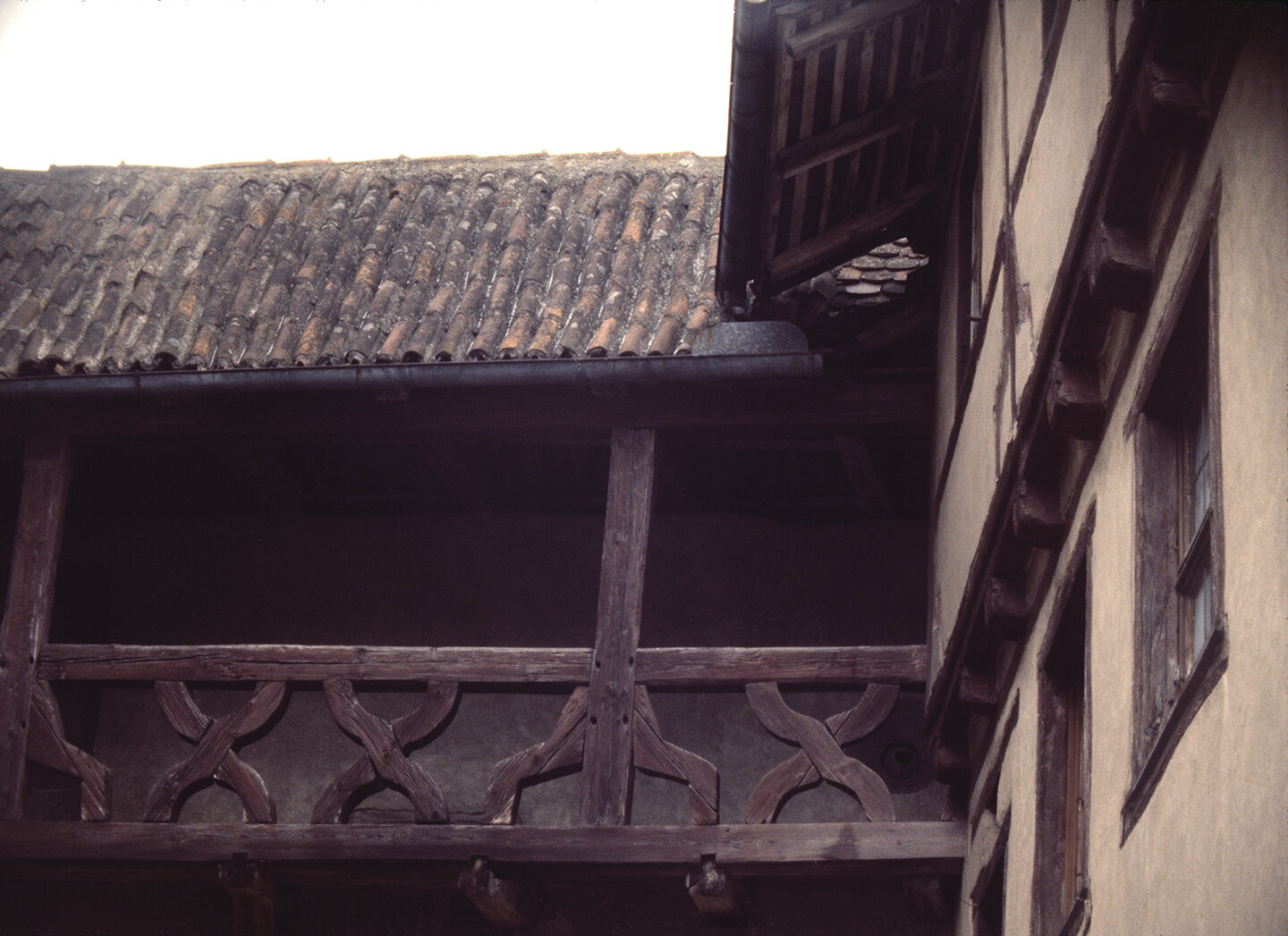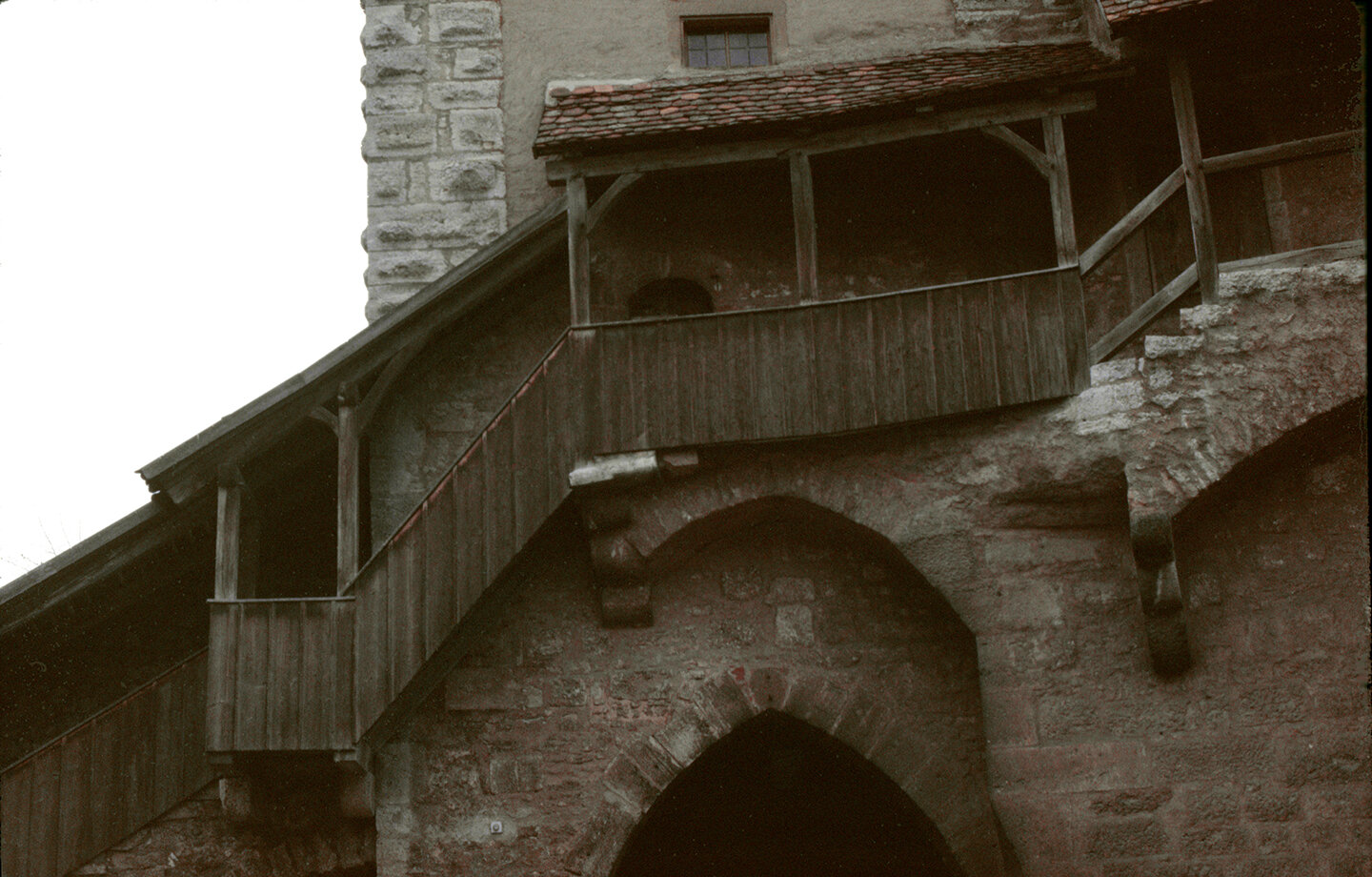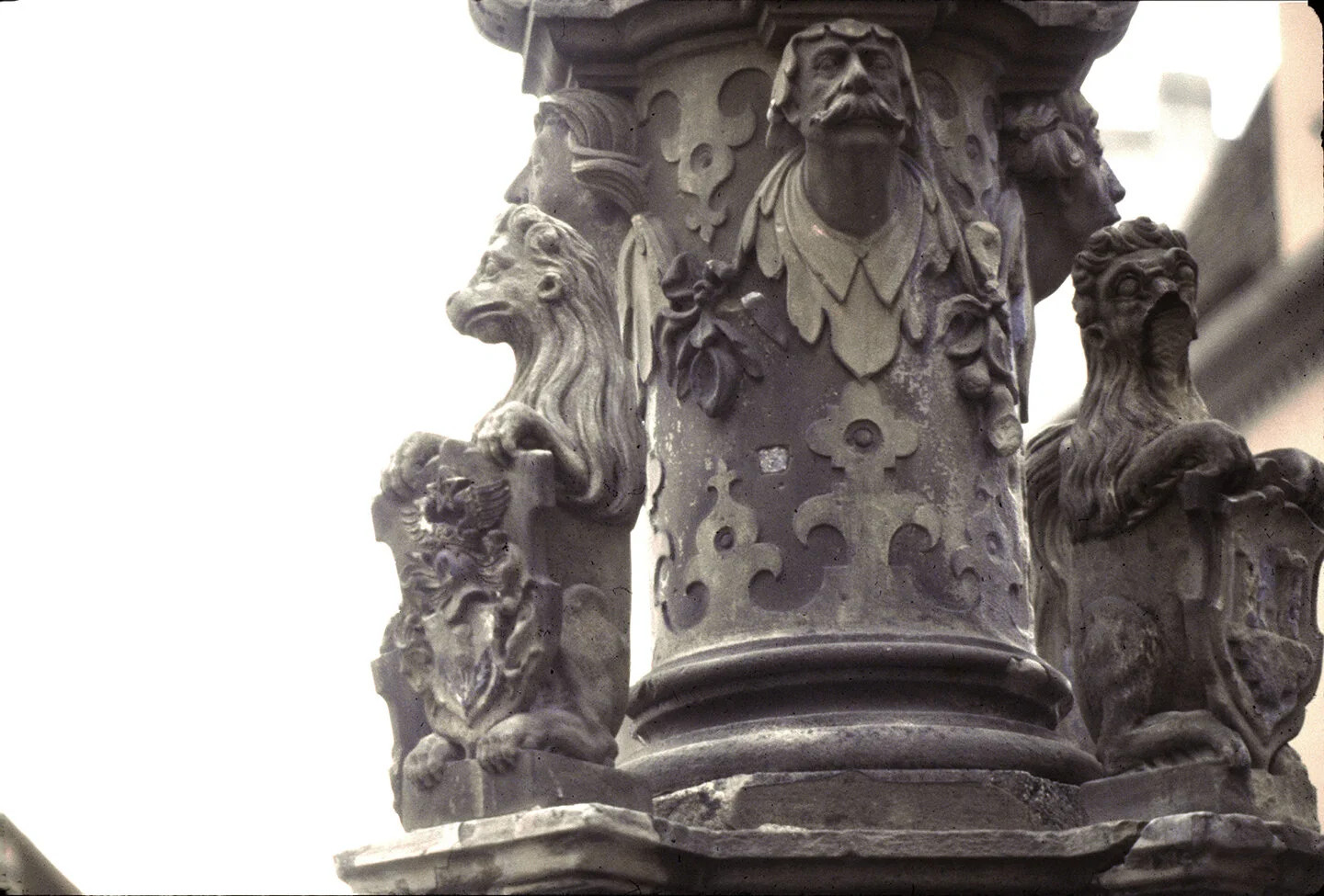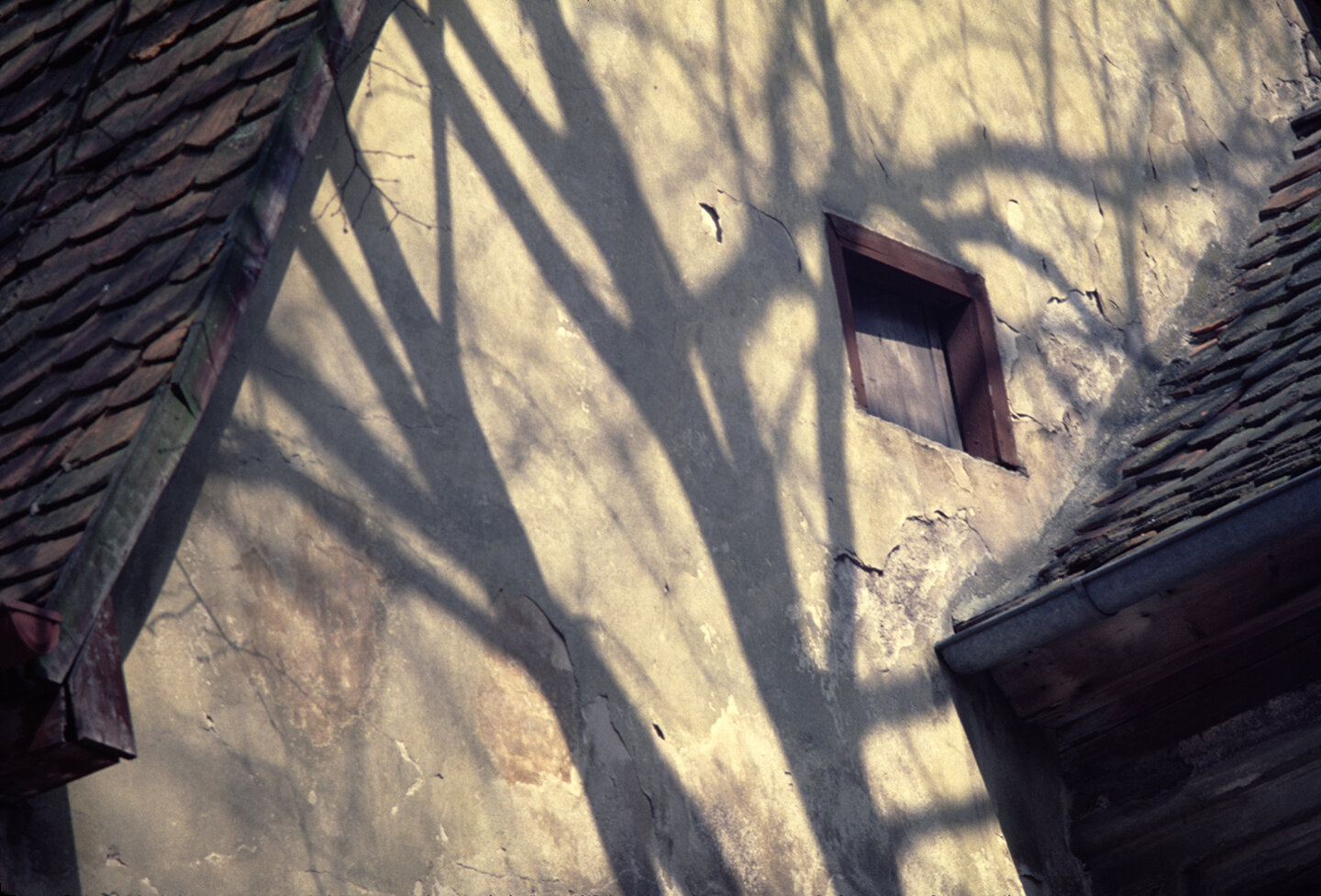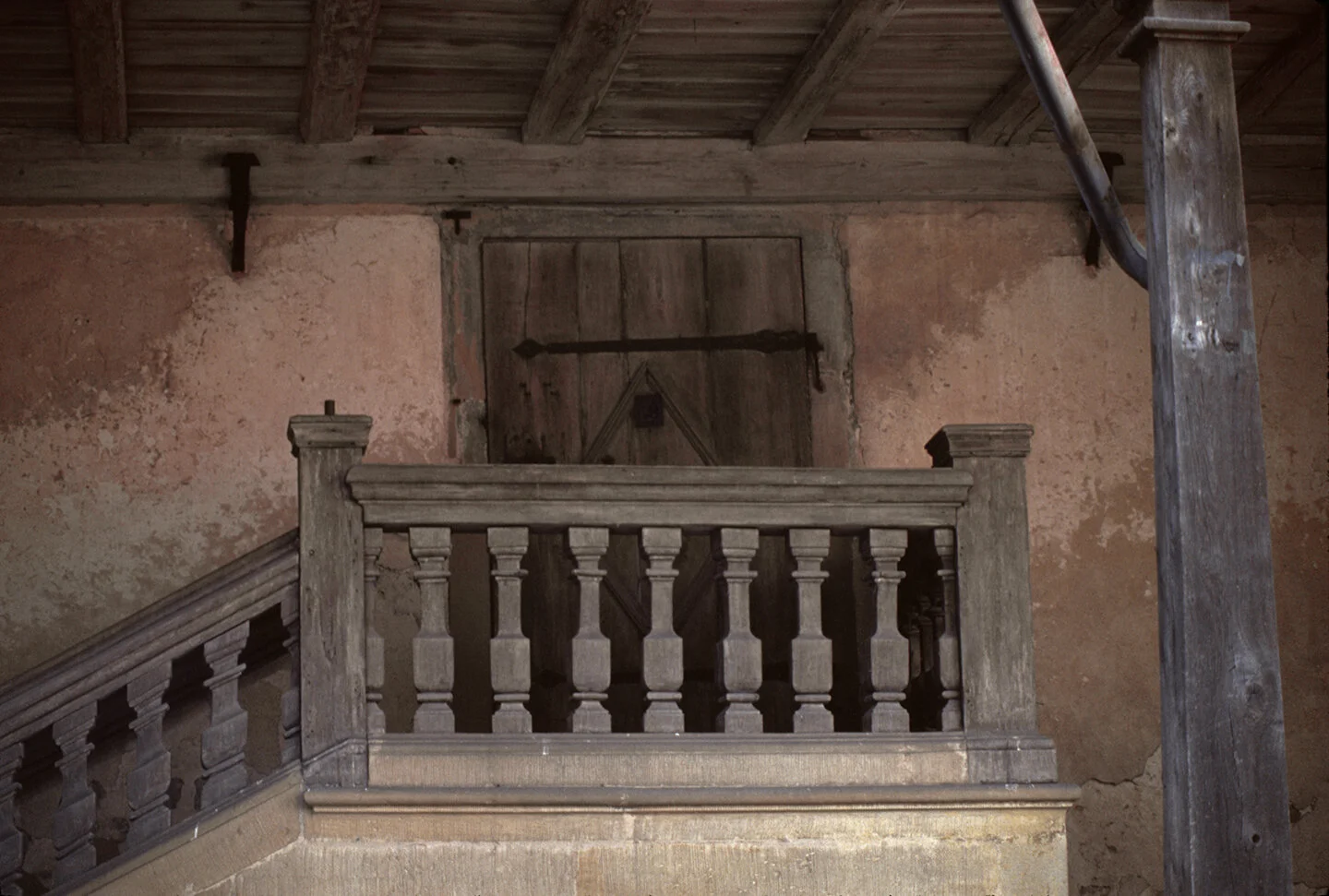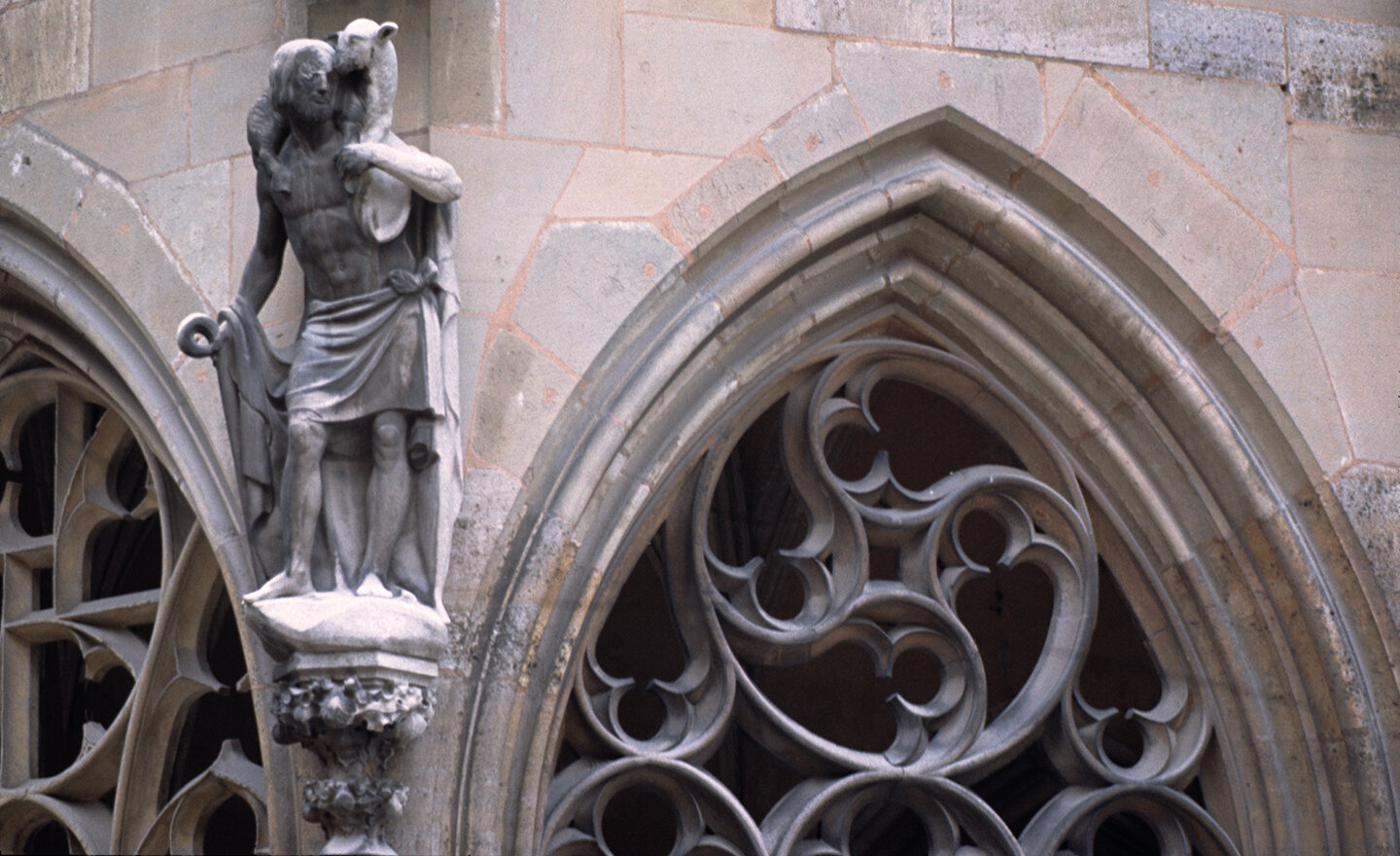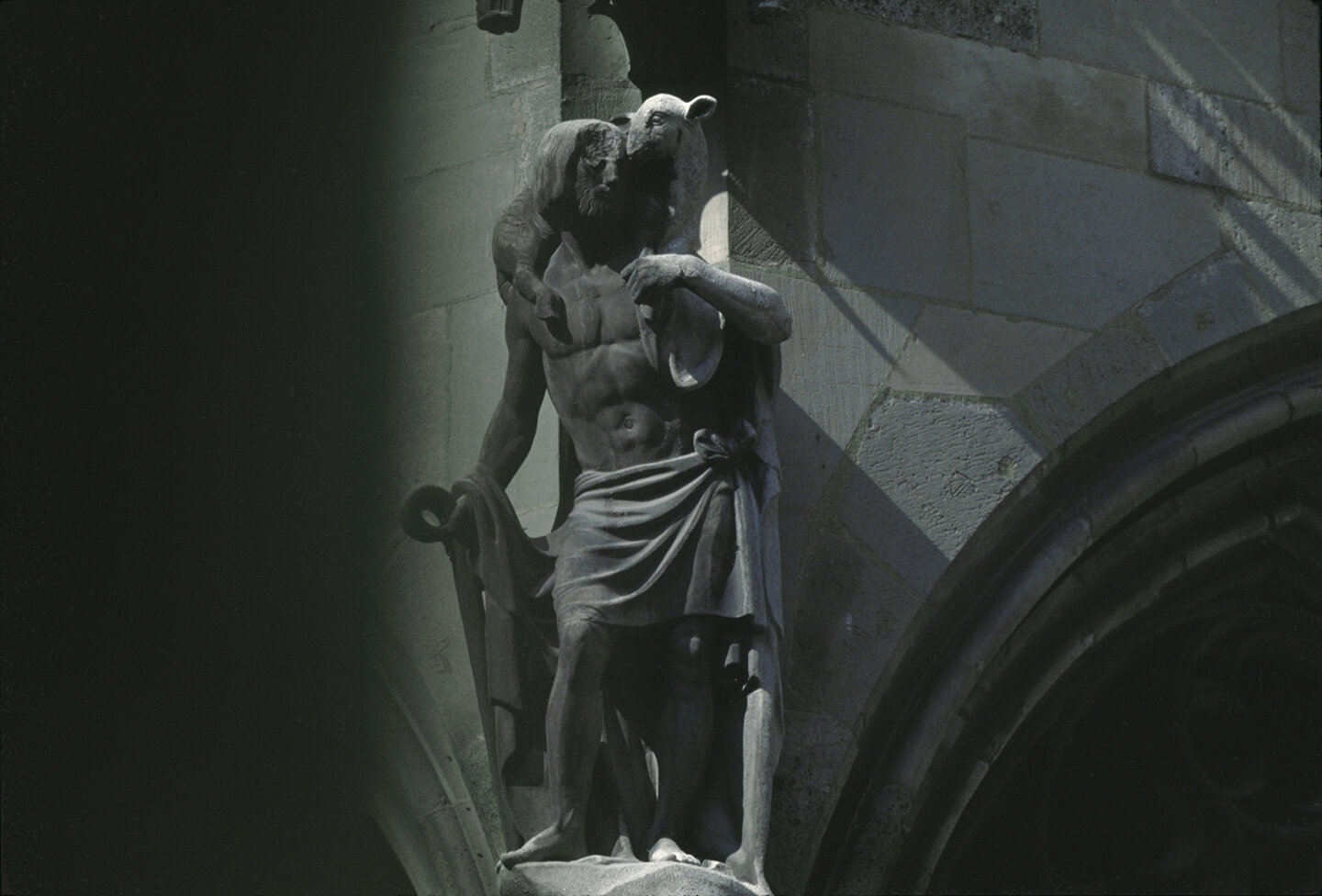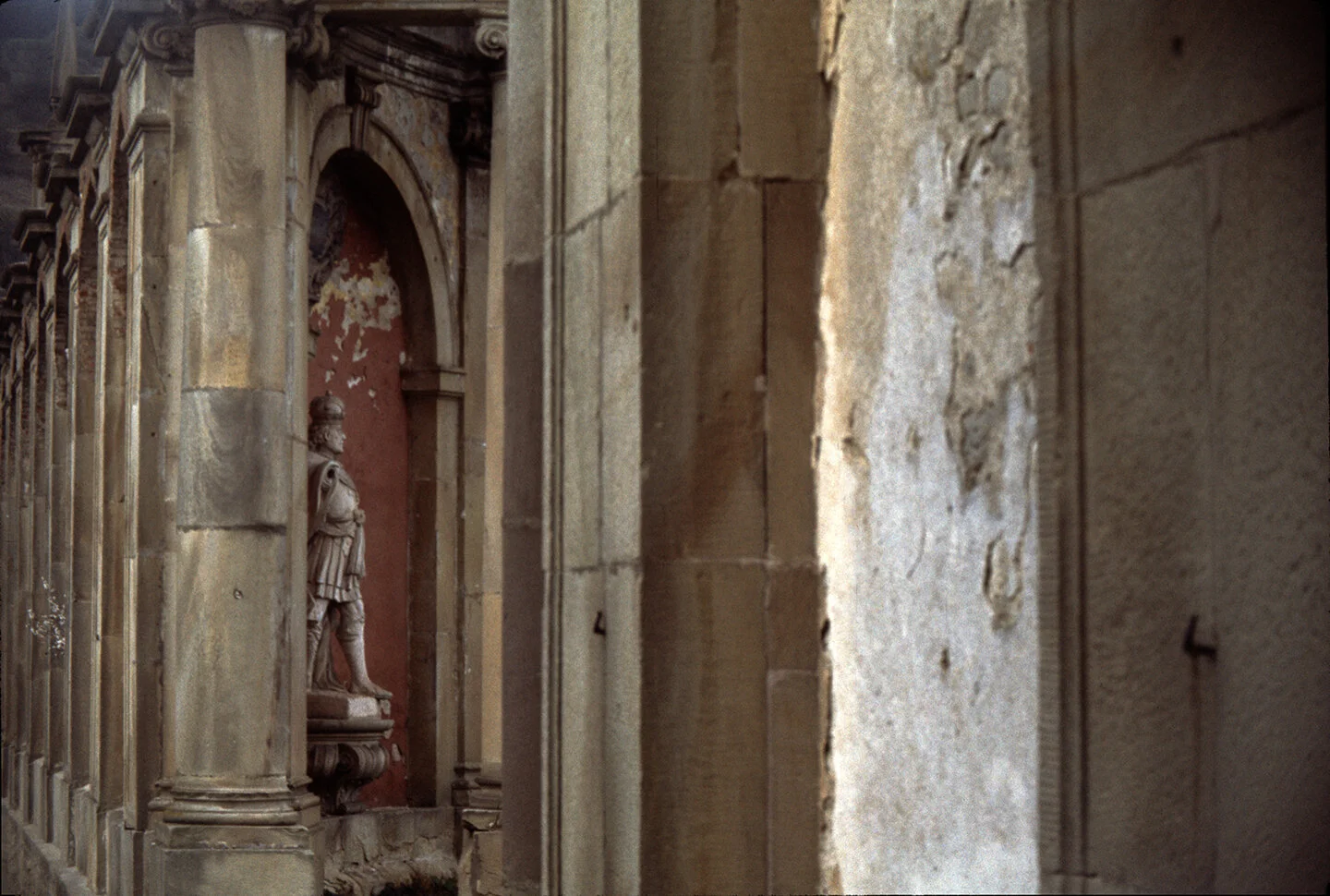THE MIDDLE AGES - Below you will find: Colorful medieval houses in COLMAR,FRANCE; various colors and architectural details in COLMAR; Colorful tile roof patterns on COLMAR CATHEDRAL- ST MARTIN’S; Stained glass windows of COLMAR CATHEDRAL; Astounding stained glass windows of ST. CHAPELLE, PARIS; Decaying side balconies and windows in VENICE, ITALY; Colorful patterned roofs of ROTHENBURG-ob-der-TAUBER, BAVARIA. Turrets and towers of ROTHENBURG-ob-der-TAUBER; Ramparts along the fortress walls in ROTHENBURG-ob-der-TAUBER; Gothic windows in ROTHENBURG-ob-der TAUBER; Ancient map of ROTHENBUG-ob-derTAUBER; Hilltop Castles along the ROMANTIC ROAD, BAVARIA; Heraldic statues along the ROMANTIC ROAD; Gardens and statuary along the ROMANTiC ROAD; Hand blown glass windows along the ROMANTIC ROAD; Turrets and and ramparts in CARCASSONE, FRANCE.
COLMAR, FRANCE - (for a projected production of Hindemith’s Mathis der Mahler) COLMAR is one of the most preserved cities in France, part of the region of Alsauce- Lorraine bordering Germany. It was mentioned by Charlemagne as early as 884, but came into it’s own in the late 13th and early 14th centuries. In it’s major museum, the Unterlinden, are the works of Mathias Gruenwald, the subject of Hindemith’s opera, which is set during the Protestant Reformation.
COLMAR CATHEDRAL - ST. MARTIN’S
(for a projected production of Hindemith’s Mathis der Mahler) The Colmar Cathedral was constructed on the ruins of a former church built in 1000. Its unusual use of varied stone could be suggested by the 150 years it took to build (from 1234 until 1365). It’s elaborate patterns of tiled roofs are unique among Cathedrals of the late Gothic period. The bell tower was added in 1572 in the Renaissance style.
STAINED GLASS WINDOWS - COLMAR CATHEDAL A few of these windows date back to the 1300’s, but most windows had to be replaced and often reproduced because of the damage during the Protestant Reformation and the French Revolution.
STAINED GLASS WINDOWS -SAINTE- CHAPELLE, PARIS (for a production of Delius’ A Village Romeo) The St.Chapelle, built by Louis IX in the early 1200’s is considered one of the towering achievements of the late middle ages. The stain-glass windows surround the structure, making it seem like it is constructed in stained glass.
VENICE - ST. MARKS, STREETS, WINDOWS for productions of Britten’s Death in Venice. Venice served as a center for trade and finance throughout the Middle Ages and the Renaissance. It was famous for it’s fleet, it’s music and art, and the high level of civic life that flourished there.
ROTHENBURG ob der TAUBER (for a production of Busoni’s Dr. Faustus 1977 & 1992)
Rothenburg is one of the best preserved cities in Germany, founded in 1170 and flourished during the 12th and 13th century. A victim of the Thirty-Years War, it was left abandoned when its population was devastated by the plague. It stopped growing, which is a reason so much of the medieval nature of the city is preserved. Its fort walls and ramparts are still intact, and much of the old town is closed to vehicle traffic. In the late 70’s’s it had very little tourism in the fall and early spring. These images were created during the fall of 1977 and in the spring of 1992.
ROMANTIC ROAD, GERMANY Rothenburg is located along the route of what is called “The Romantic Road” which stretches from Wirtzburg moving south until it arrives at Ludwig’s castle at Neuschwanstein . II’s title was dreamed up by travel agents in the 1950’s. It. however, does follow a trade route which connected central Germany to the south. Along this route are many castles and towns with medieval touches. Some of the palaces come from the later Baroque period.
CARCASSONE, FRANCE
Carcassone, located near the Pyrenees mountains and the Mediterranean ocean, is one of the oldest fort cities in France, and has been carefully restored (in the mid-1800’s) and preserved. Important as trading town as early as the 6th century BC, it grew and prevailed until the 400’s when it was contested, attacked, defended through the period of Visigoths, Saracens and Franks. By 1208 it was famous as a victim of the Albigensian Crusades, led by the Pope to rid the region of the Catharses, a rebellious religion. its walls and turrets have been a constant inspiration for fantasies, historical films and theater designs.















































































































































